
Customer expectations drive a business toward success or lead to its eventual failure. It’s all about how well you handle them.
70% of US customers desire more profound and personal engagements with brands. At the same time, 93% of customers want brands to respond within a 24-hour timeframe. This says a lot about the fast-paced environment we live in, where people seek not only quick but meaningful interactions.
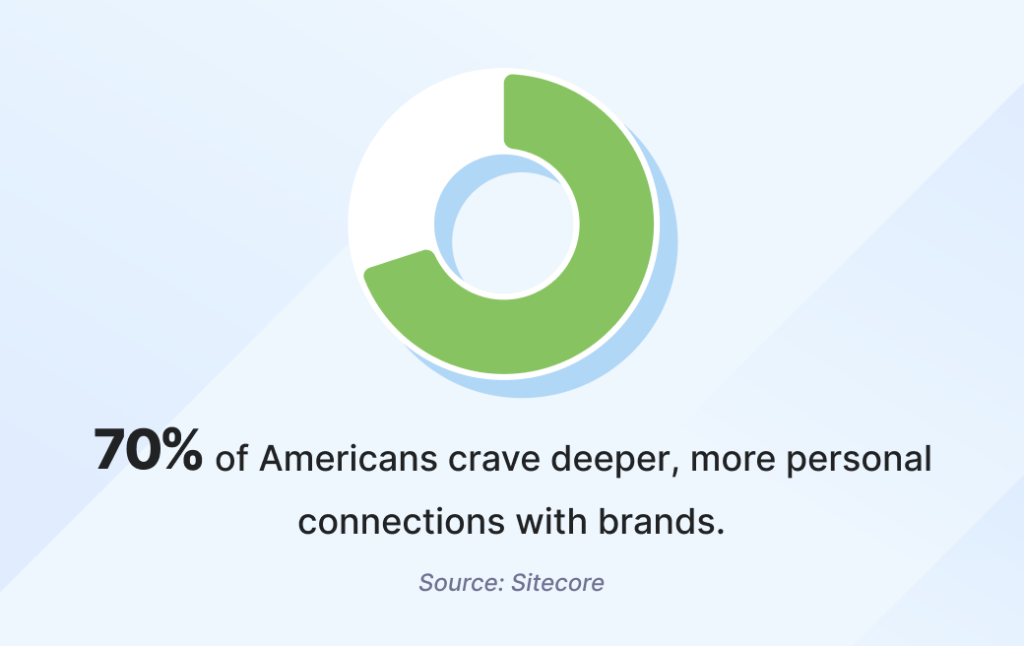
Brands need to adapt quickly, and one way to do that is by leveraging technology and more efficient processes.
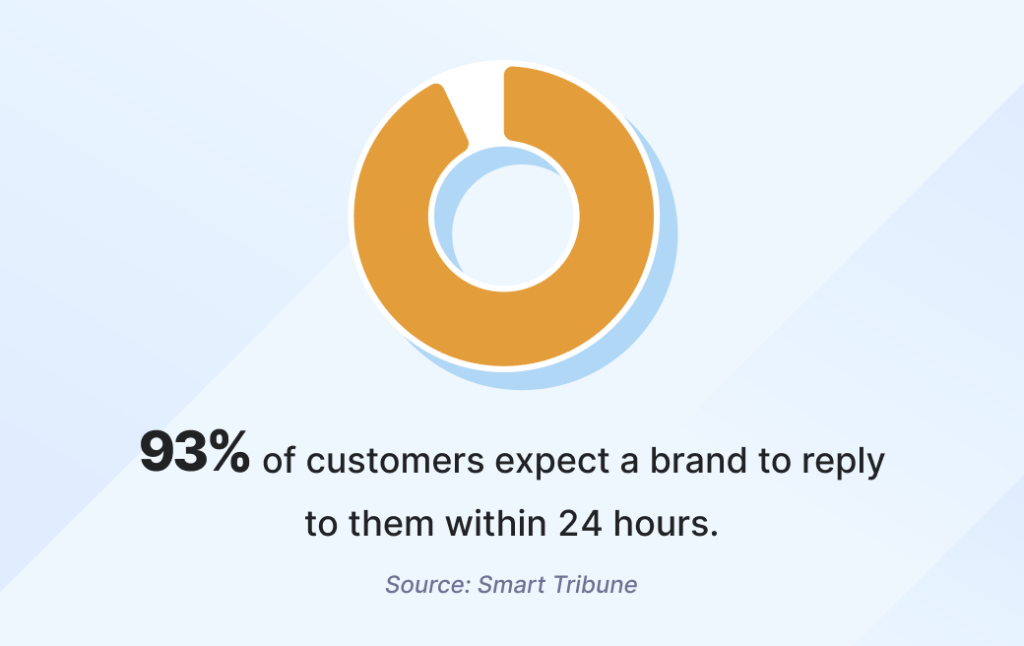
So, how do you make it happen? The first step is knowing exactly what your customers are looking for.
What are customer expectations?
Customer expectations are defined by what the customer wants from a product, service, or organization. These are based on the individual’s past experiences and the knowledge derived from them.
Expectations start from the moment a potential client is introduced to your brand. This is when clients form opinions regarding your product’s price, benefits, packaging, marketing, etc.
How do consumer expectations affect demand?
Customers expect quality, value, and innovation. When a product meets quality and value criteria, clients are often willing to pay extra. If it falls short, demand decreases, regardless of the price. Innovation is equally important, especially in a highly digitized environment. Clients expect constant updates and improvements, as their needs are constantly evolving.
Just how sensitive is demand for a certain product to changes in price, for instance? When expectations are high, so is willingness to purchase. This is where inelastic demand comes in — price changes no longer impact demand quantity, as companies meet and exceed client expectations. Apple clients are a great example of this dynamic.
When expectations are unmet, however, elastic demand appears. Purchases decrease, loyalty drops, and clients start looking for alternatives.
Positive and negative expectation situations
Here is a situation where high consumer expectations lead to increased demand.
During key shopping seasons, such as Black Friday, consumers expect significant discounts and deals from major retailers. These positive expectations around saving money lead to increased demand, with consumers purchasing more than they usually would because they believe they are getting a bargain.
✅ Example: Amazon’s Prime Day event, where customers anticipate massive discounts, often leads to a significant surge in sales as consumers eagerly wait for the deals.
There are situations where unmet expectations result in decreased demand. A product that experiences a major recall or receives negative reviews can dramatically impact demand.
❌ Example: When Samsung recalled the Galaxy Note 7 due to battery explosions, consumers’ expectations around the product’s safety and quality dropped. This led to a significant decrease in demand, and many consumers switched to competitors.
Types of customer expectations
Customers hold various types of expectations, often multi-faceted. Here are the five major types.
- Explicit: Explicit expectations are clearly stated and easily understood desires. Customers explicitly communicate what they want, whether it’s a specific product feature, delivery time, or service quality.
- Implicit: Implicit expectations are unspoken, assumed desires based on common norms, past experiences, or general understanding. Customers might not voice these expectations, but they hold them implicitly.
- Interpersonal: Interpersonal expectations revolve around the way customers expect to be treated during interactions. This includes courteous behavior, active listening, and empathy from customer service representatives. A customer calling a helpline expects the representative to be patient and helpful.
- Digital: In today’s digital age, customers have specific expectations related to online experiences. They expect a website to be user-friendly, load quickly, and provide secure transactions. A customer shopping online expects a seamless and secure checkout process.
- Dynamic: Dynamic performance expectations change as a customer interacts more with a product or service. As they become familiar, their expectations adapt.
Customer expectation examples
The change in consumer expectations over the past few decades has been significant, influenced by advancements in technology and access to information. Based on the above expectation types, these are the most common examples of customer expectations you should be aware of nowadays:
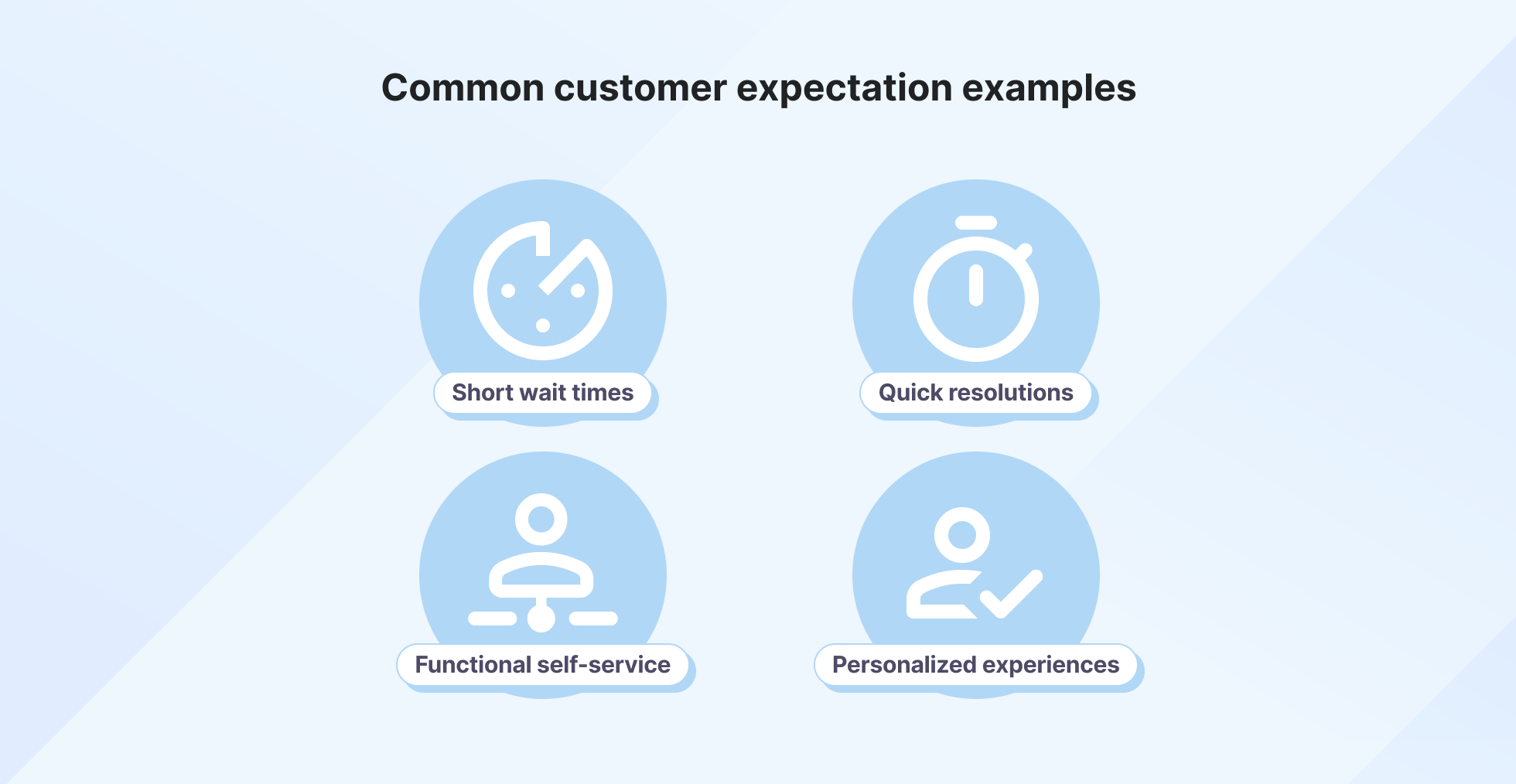
Short wait times
- Type of expectation: Explicit
- Explanation: Customers explicitly expect prompt responses to their inquiries and minimal waiting times, particularly in customer service.
- Scenario: A customer contacting a support hotline expects to connect with an agent without waiting in a long queue.
Quick resolutions
- Type of expectation: Explicit
- Explanation: Customers clearly express their desire for swift issue resolution. They expect their issues to be resolved effectively in the least amount of time possible.
- Scenario: A customer reporting a technical issue expects a rapid and accurate solution from the support team.
Functional self-service
- Type of expectation: Implicit
- Explanation: Customers implicitly expect companies to provide accessible and functional self-service options. They anticipate the ability to resolve issues or seek information independently.
- Scenario: Customers presume that a company’s website will have a user-friendly interface for finding answers to common questions.
Personalized experiences
- Type of expectation: Dynamic performance
- Explanation: Customers’ expectations evolve with their interactions. Initially, they may expect standard interactions, but with time, they expect personalized experiences based on their history and preferences.
- Scenario: A customer who frequently shops online expects the platform to suggest products based on their past purchases and browsing behavior.
Aleksandra Lemzyakova, our head of customer support, was kind enough to share her insights into why it’s so important to live up to customer service expectations:
“At our core, living up to customer service expectations means genuinely recognizing each customer interaction as an opportunity to reflect our commitment to service excellence. We ensure that every team member understands the impact of their work on customer satisfaction. This understanding is integral not only to meeting but often exceeding customer expectations. We don’t just resolve issues; we aim to deliver a memorable service experience that customers can trust and rely on. It’s about consistency, empathy, and always going the extra mile.”
How to manage customer expectations
Next, we will learn how identifying and understanding customer needs can lead to good customer expectation management. This only happens if we focus our entire process on a user-centric marketing approach, which we will tackle in the following paragraphs.
1. Understand your customers’ unmet needs
Brand positioning plays a crucial role in meeting customer needs and creating new ones — challenges your company must meet.
Here are some questions to consider:
- What is the value that your product offers?
- How does it add value?
- How is your company different from its competitors?
- What makes you stand out?
- How can you succeed when others fail?
🥇🥈🥉 The position your competitors already hold defines your position in the marketplace. Don’t try to beat them. Instead, stand out by being different. Introduce features your competitors don’t offer or consider addressing a smaller audience.
You also need to ask yourself who buys your product. What hobbies do they have? Where are they from? Why did they sign up for your service at 2 AM? Small details are important.
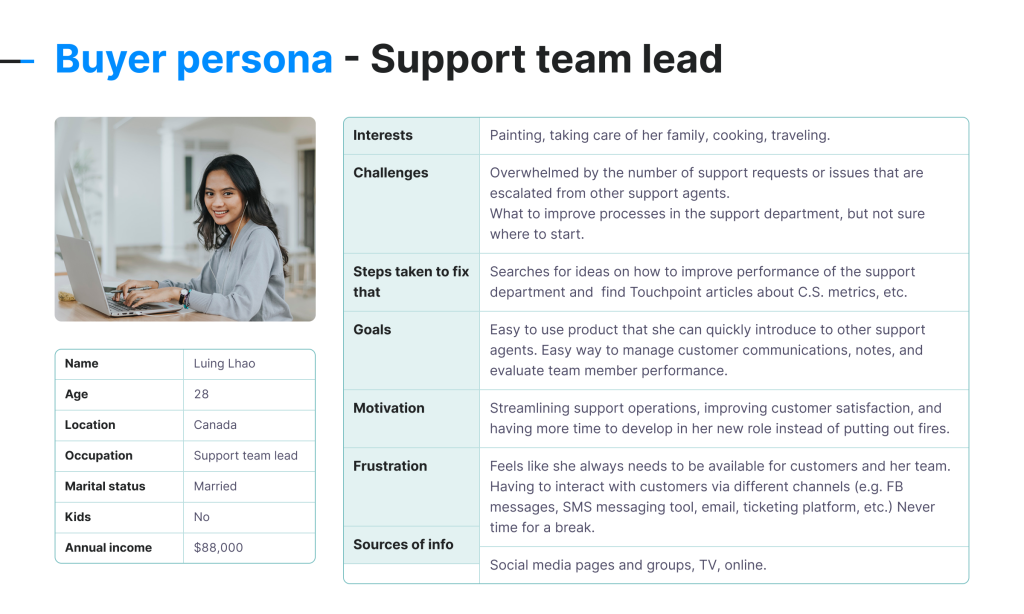
Keep in mind that your buyer persona isn’t fixed.
🤝 Understanding client needs is the first and most crucial step toward success. If your brand positioning process is spot-on, then your product will fit into the existing market seamlessly. Success lies in anticipation: know what your clients want before they do.
Over time, an iterative approach to your product will help you define and redefine your brand positioning.
Next, let’s get into customer needs.
Product-oriented needs
- Pricing: This is the market value of your product.
- Functionality: These are the features that solve a problem. Is your product safe? Is it reliable? Is it effective?
Service-oriented needs
You should know how to meet your client’s emotional needs.
- Key information about your product: This can be offered as relevant pieces of content along the sales funnel (frequently asked questions or FAQs, how-to videos, or anything that will make customers feel confident using your products or services).
- Proof of empathy: This includes how you handle complaints, how good your client communication process is, how often you offer help, how you collect feedback, etc.
2. Collect and apply customer feedback
Nothing is more useful for your future product development plans than customer feedback.
The key to getting relevant information is timing: you need to determine where each client is in their sales journey and collect information from them that applies to that specific stage.
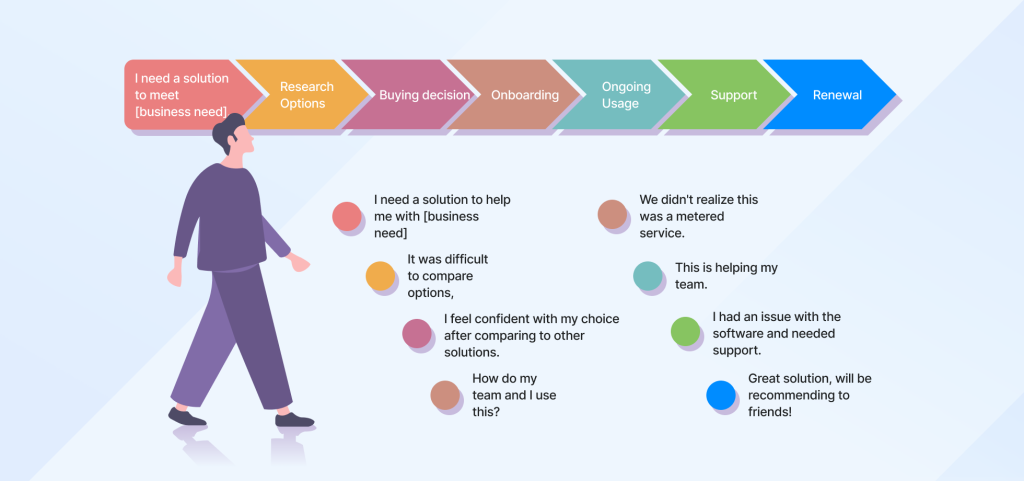
For instance, if they have been using a feature for a long time, there is no need to send educational content because that might be redundant. Instead, tell them about a new product they might like or an upcoming feature.
- Track site clicks, email clicks, open rates, and anything else that gives you an insight into repetitive behavior.
- Run focus groups to get detailed feedback on specific product features, track discussions around social media to see what’s trending, and automate feedback surveys.
- Don’t just stick to the usual questions.
📝 If survey questions become repetitive, people might refuse to answer. Create a personalized set of questions. When you implement the changes that clients have suggested, evaluate them to see if any have triggered a change in their perception of the product.
3. Stay ahead of the competition
Competitors influence your customers’ journey. Even after your product hits the market, you must constantly develop new features or improve existing ones to keep it relevant.
Monitor everything your competition is doing:
- How and when do they tap into new markets?
- What new product features have they introduced?
- When do they schedule releases?
Create focus groups or a side-by-side analysis of your product vs. main competitors to identify weak points in either product or to discover market gaps.
Also, check out their social media channels:
- Do they respond to every user question?
- How often do they receive positive customer feedback?
- Do they have reviews on the most common review platforms like Trustpilot and Capterra?
👍 Anything they do, do it better.
4. Be transparent
57% of consumers say they will stop buying from a company if they feel their trust has been broken. That is why you need to be upfront with potential delays in delivery, launch date modifications, or anything that might negatively impact your business.
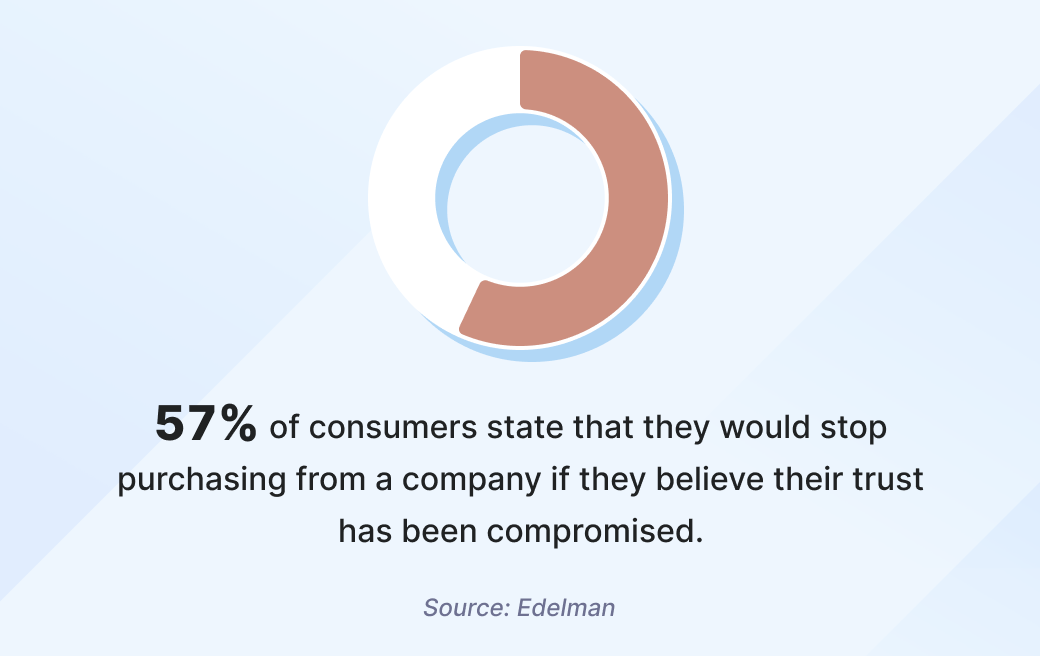
Letting customers know that you’ve made a mistake will not damage your business, but not being straightforward will. If you make an error, own it, and communicate with your clients. Tell them you are working hard to find a solution and send constant updates.
Transparency builds trust, which ultimately boosts brand loyalty.
📰 Always publish the latest news about your products and your company on your website, and whenever you can, include social proof in client communications. Clients don’t expect your products to be perfect. They want to be heard and included.
5. Stay flexible
As clients adapt to new products and services, so too should your business adapt to customers’ changing needs. Just because a strategy has worked well for your business doesn’t mean you can’t do better. Step out of your comfort zone and seize new opportunities.
Flexibility is about being there for your clients when they’re going through a rough patch.
For example, you could offer them a personalized payment plan, a new way of contacting customer support if they’re having trouble, or simply staying in touch without trying to land a sale.
🤝 If you’re looking to seal the deal in a business relationship, then pay close attention to customer requests, anticipate new ones, and be flexible with what you can offer — that goes a long way.
6. Create an effortless buying experience
Your clients need to find the information or product they want on your webpage within one minute. Anything beyond that is a waste of their time, so make sure you structure your content around the following ideas:
- Build your site using intuitive navigation, make it accessible to all users, and use visitor feedback to implement changes
- Display a consistent brand message across all contact channels
- Consistently update site pages to display the latest information
The impact of meeting customer expectations
Meeting customer expectations is not just about delivering a product or service; it’s about creating a positive and lasting relationship with your customers. Their influence on your business is profound, as they impact everything from retention to competitiveness.
Successful companies constantly improve services and enhance the value of their features. This may generate distractions down the sales pipeline, making it challenging to direct customers toward the final stage of making a sale.
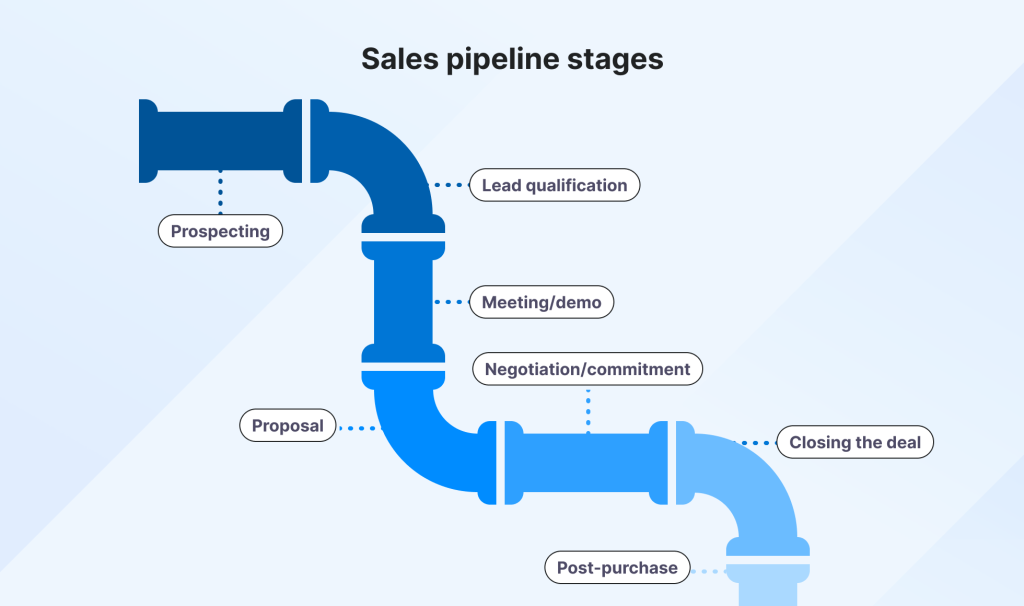
However, if you correctly identify and meet client expectations, you have a significant advantage because you will know how to steer their journey in a more impactful way.
Improved customer retention
Increasing customer retention by 5% can lead to a profit boost ranging from 25% to 95%. Big companies can afford to go all out with elaborate marketing campaigns because they have already established a solid base of recurring customers and can allocate budgets for new client acquisition.
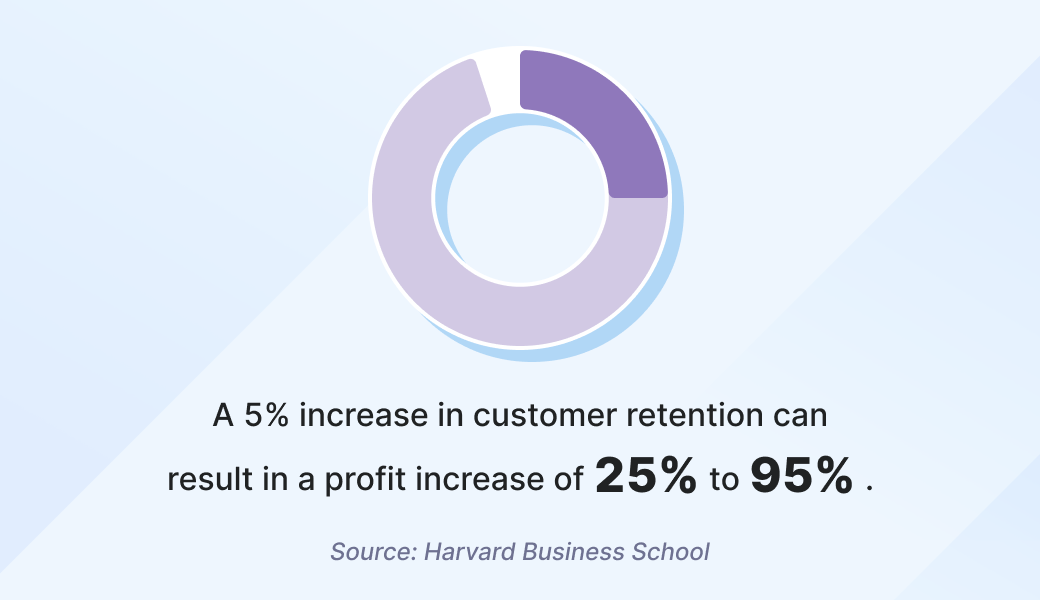
Companies with tight budgets can achieve sustainable growth by focusing on their existing customers. Happy customers make the best recommendations, reducing customer acquisition costs and allowing the business to invest in other departments, like research and development.
💰 Focusing on customer retention will help you reduce churn rates and generate more predictable income for your business.
A strong foundation of loyal, recurring customers
Securing a customer is a major win, but you’re still only halfway there. Actionable content will support your customer’s subsequent journeys down your sales funnel. This includes drip email campaigns, tutorials, how-to videos, and meaningful interactions.
Be there for your clients whenever they celebrate a major life event. Send them a survey when they purchase one of your products and offer them exclusive deals on new products. If you make them feel included in your business, they are more likely to make repeat purchases.
🔁 Recurring clients, especially those choosing a subscription service, will provide a constant source of revenue. Acquiring new clients is always unpredictable and more time-consuming, so make sure you value the ones you already have.
New referrals via word-of-mouth
Securing new customers can be challenging, but this is easily achieved with targeted and sustained customer support. This creates positive reviews and an overall trustworthy brand image, which generates referrals.
How do you offer optimal customer support? By answering any relevant question from a client and always being there if there’s a problem. However, when that is not possible, there are other viable options:
- FAQs
- Video tutorials
- In-depth documentation
- A solid knowledge base for your support team
🤑 By understanding customer expectations and meeting them at the right time, you can generate new leads. Every new customer who leaves a positive review for your product will convince others to use it. Referrals start with word-of-mouth.
Adapting your product to current market requirements
The best way to create a successful new product is to understand the reasons people choose one product over another. What does it have that the competition doesn’t?
Client expectations are influenced by:
- Their education level
- Availability of alternatives
- Previous negative experiences with similar products
🔬 Enhancing a product requires extensive research into buyer personas and comparative tests with different versions of the same product. Sometimes, a small change in a product’s name or its features can make it attractive to an entirely different target market.
Increased satisfaction via omnichannel support
Omnichannel support enables customers to get support on their own terms, at their convenience. With omnichannel support, they reach out when it suits them. They’re not bound by a 9-to-5 schedule. This reduces frustrations, enhances personalization, and makes customers feel valued with every interaction.
SMS, email, text applications, and calls, into a single environment.
Textmagic, our flagship product, simplifies omnichannel communication by integrating SMS, email, and messaging apps into a single platform. This allows you to engage customers seamlessly across their preferred channels, improving response times and their overall experience.
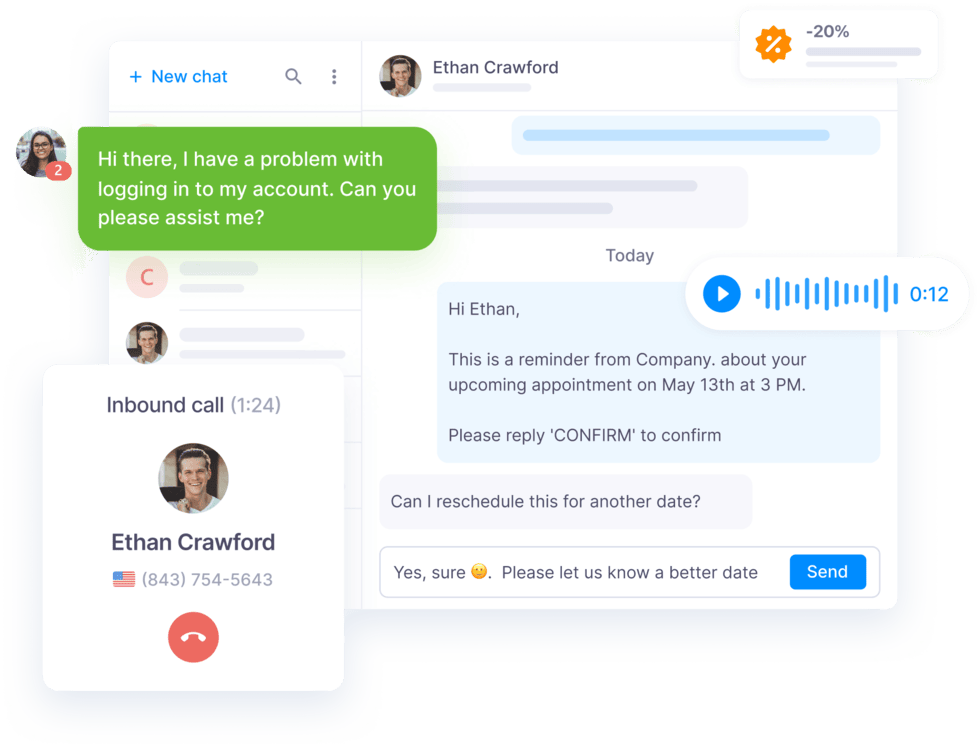
Improve your customer expectation management
Managing customer expectations is not as tricky as you might think. It starts with understanding what triggers them and continues with constant product improvement to answer growing client needs.
To deliver a successful product, you need to fine-tune it constantly and use the invaluable feedback your clients offer. Pay close attention to every piece of information they give and use it to create a seamless customer journey.
Follow our blog to enjoy fresh content that will help you elevate your customer service game and stay one step ahead of your competitors!
Frequently Asked Questions (FAQs)
Managing client expectations means setting clear, realistic goals for deliverables, timelines, and communication. It involves proactive updates, transparency, and aligning your service with what the client values most.
Stay calm, listen actively, and acknowledge their frustration. Apologize if needed, offer a solution, and follow through quickly. Showing empathy and responsiveness often turns a negative experience into a positive one.
Strong client relationships need clear communication, reliability, and trust. Regular check-ins, setting boundaries, and delivering consistent value help ensure mutual understanding and long-term satisfaction.
Meeting expectations is critical for customer satisfaction, loyalty, and brand reputation. When expectations are consistently met or exceeded, customers are more likely to return and recommend your business.
Related articles
Business goals examples: What they are and how to set them right
Are you setting realistic business goals that push y...
How to use concept maps to organize complex ideas (plus free templates)
From marketing strategies to customer service workfl...
SMS geofencing: What it is and how does it work
Geofencing is one of the latest technological advanc...
10 Sectors making the most of text message marketing
Text messaging has become a popular, effective marke...
Geofencing vs geotargeting: Which is the best for your business
Location-based marketing strategies such as geofenci...




